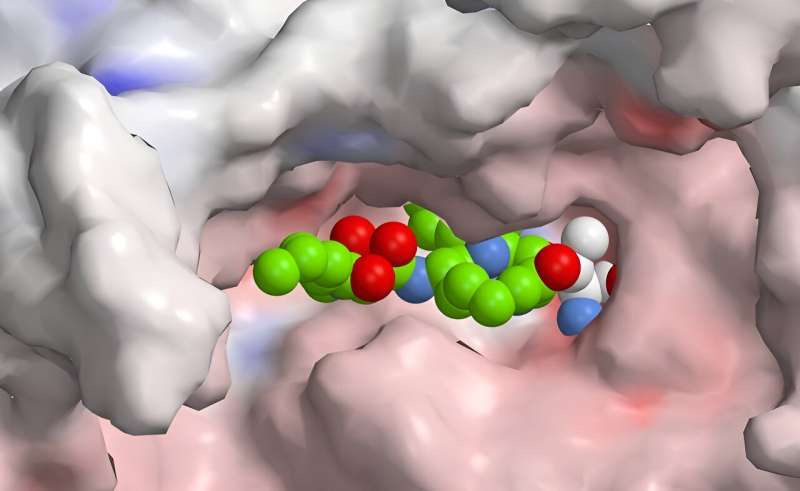This article has been reviewed according to Science X's editorial process and policies. Editors have highlighted the following attributes while ensuring the content's credibility:
fact-checked
peer-reviewed publication
trusted source
proofread
A hybrid arrowhead against immune disorders: Bacterially derived natural product inhibits cellular immune response

The so-called immunoproteasome is essential for the cellular immune response. In autoimmune diseases, however, it is overactive. Until now, it has not been possible to selectively inhibit the immunoproteasome without disrupting other cellular mechanisms. Now, researchers led by Helge Bode have developed a technique to manipulate the production of a natural bacterial substance, resulting in a novel, more selective drug. The results pave the way for more targeted inhibition of the immunoproteasome.
To fight invading bacteria and viruses, the immune system must first learn their molecular structure. To do this, a cellular enzyme complex known as the immunoproteasome breaks down the intruder and presents its molecular structure to the immune cells. If an overactive immunoproteasome mistakenly attacks the body's own structures, this can lead to immune disorders.
In order to regulate this process, researchers have been searching for inhibitors of the immunoproteasome for a long time. However, it is important to ensure that the other proteasome variants in the cell—such as those required for cellular recycling and waste disposal—are not also blocked. The selectivity of the drug is crucial to avoid side effects.
The research group led by Bode at the Max Planck Institute for Terrestrial Microbiology in Marburg has been working for years on designing enzyme complexes on the drawing board and using synthetic biology to create new natural substances. Potential candidates for drugs to treat immune diseases, as well as antibiotics or anti-cancer drugs, come not only from the group of peptides, but also from the group of long-chain fatty acids known as polyketides. While peptides are usually produced by non-ribosomal peptide synthetases, polyketides are produced by polyketide synthases.
The study is published in the journal Chem.
Fused enzymes
Now, in collaboration with Michael Groll from the Technical University Munich and Markus Kaiser from the University of Duisburg-Essen, the team has succeeded in developing a peptide-polyketide hybrid and assembling it in just a few steps. "The XUT technology we developed uses docking sites located in thiolation domains. Since these domains are present in both non-ribosomal peptide synthetases and polyketide synthases, both types of enzymes, for peptides and for polyketides, can be fused," explains Leonard Präve, lead author of the study.

Nature itself also produces such hybrids of non-ribosomal peptide synthetases and polyketide synthases. A particular class of substances, syrbactins, is found in bacteria that damage plants or insects, for example. By inhibiting the proteasome in these higher organisms, syrbactins cause the cell to die by 'clogging' its waste disposal system.
Since this effect is desirable in tumor cells, syrbactins are considered as potential cancer drugs. Although drugs based on inhibition of the proteasome already exist, there has been no specific and therefore low-side effect agent against the immunoproteasome, nor one that uses syrbactin as a starting point for drug development.
"With our approach, we are able to rationally modify syrbactins in several steps to create a novel, more selective inhibitor of the human immunoproteasome," adds Bode. Although the resulting compound is not yet sufficiently selective, it is already pointing the way to how further variants can now be optimized in order to reduce the side effects.
In the future, these will be generated on the computer screen and in a high-throughput process, so that the best variants can be selected for specific applications.
More information: Leonard Präve et al, Bioengineering of syrbactin megasynthetases for immunoproteasome inhibitor production, Chem (2024). DOI: 10.1016/j.chempr.2024.07.013
Journal information: Chem
Provided by Max Planck Society





















